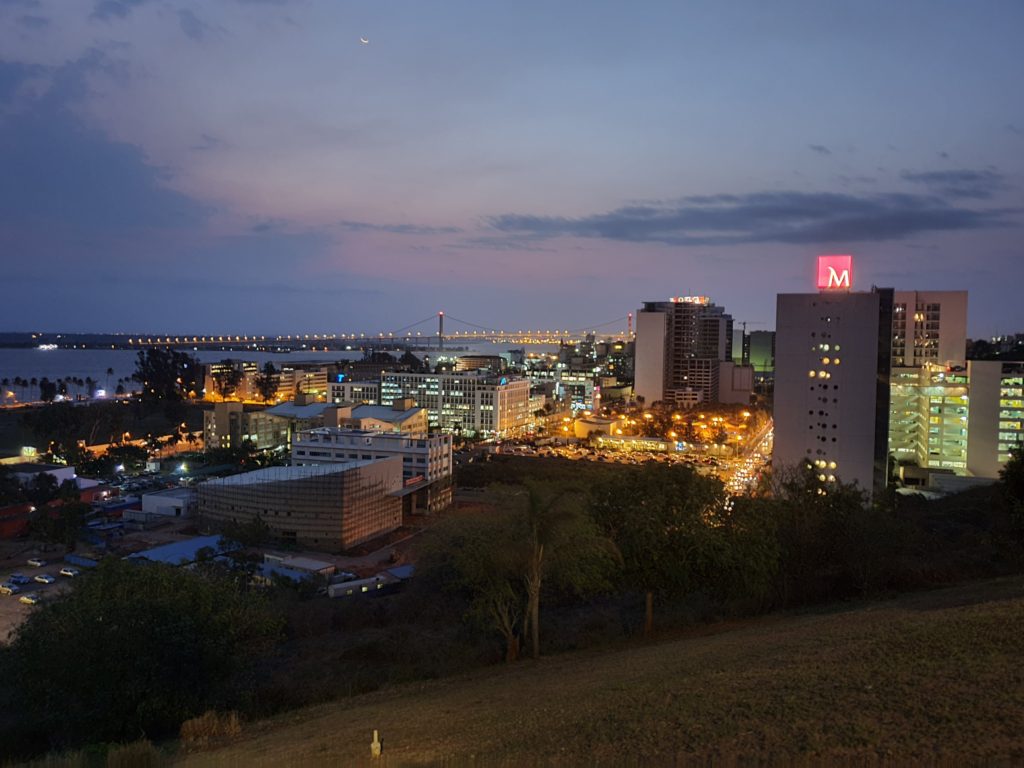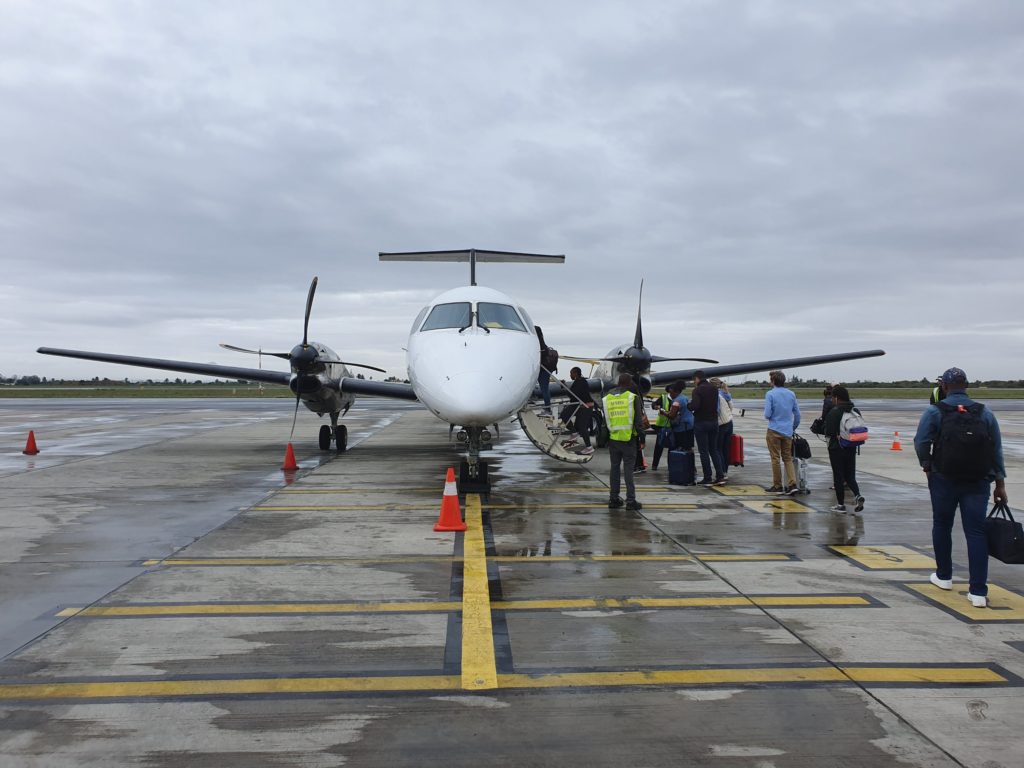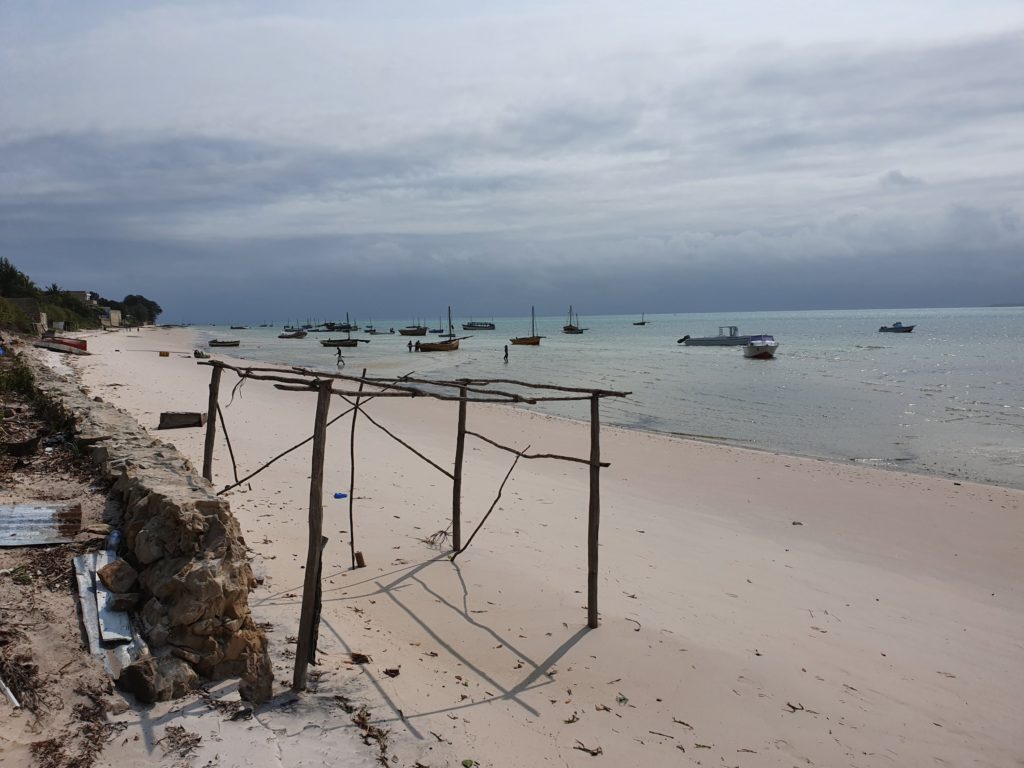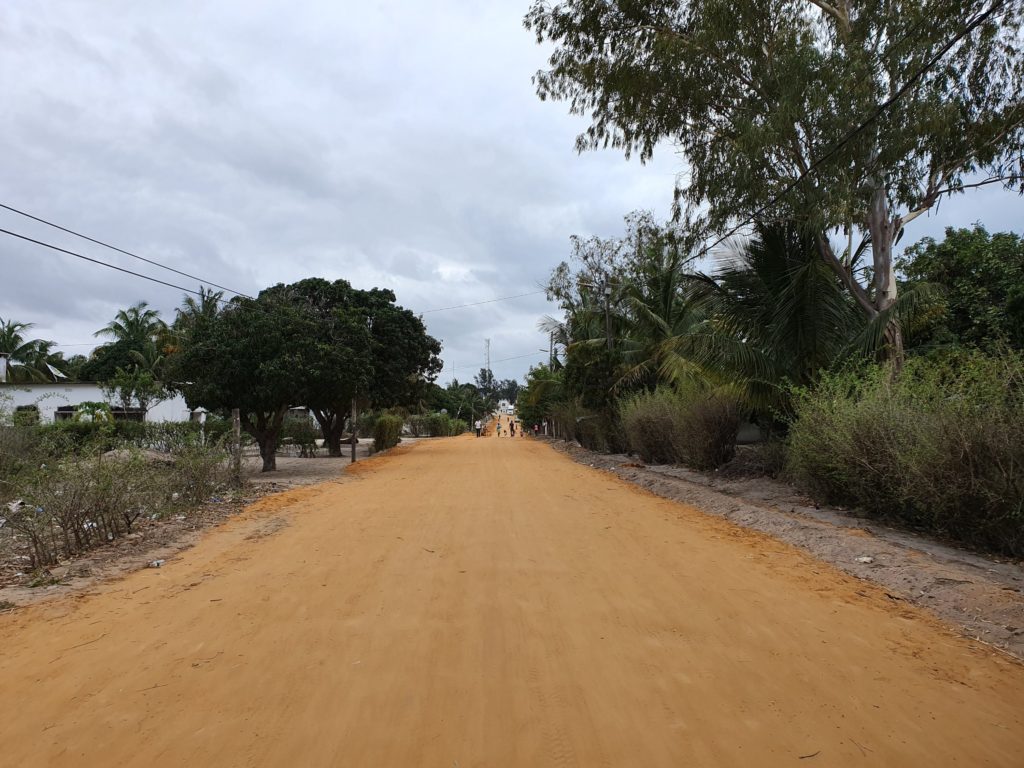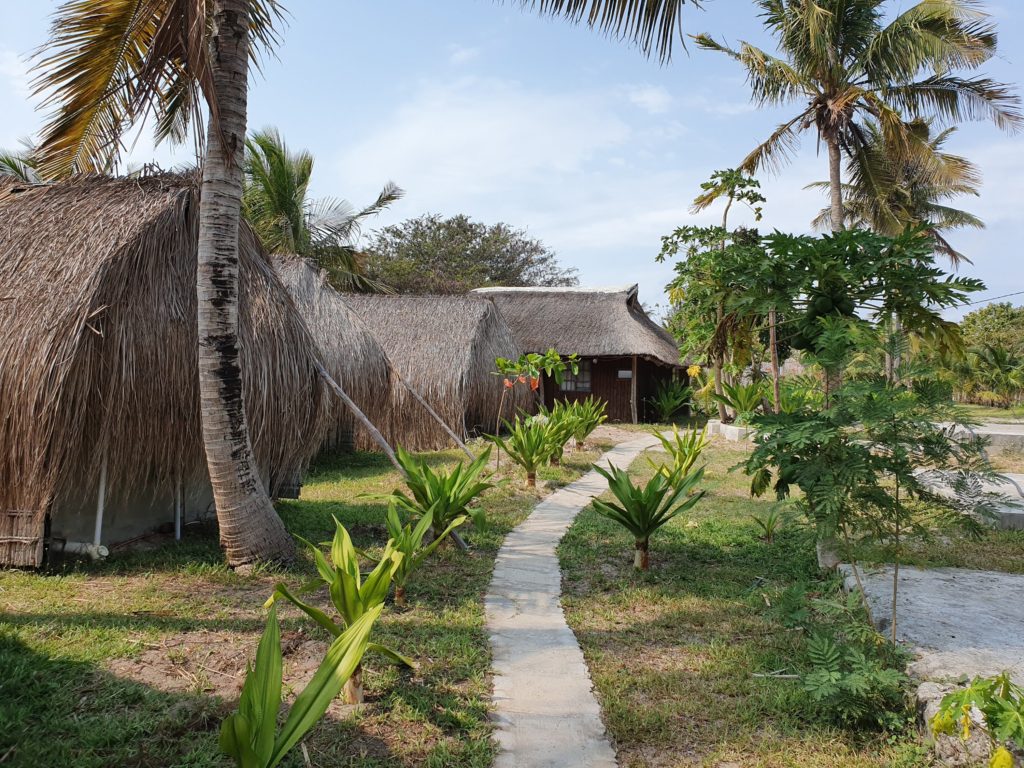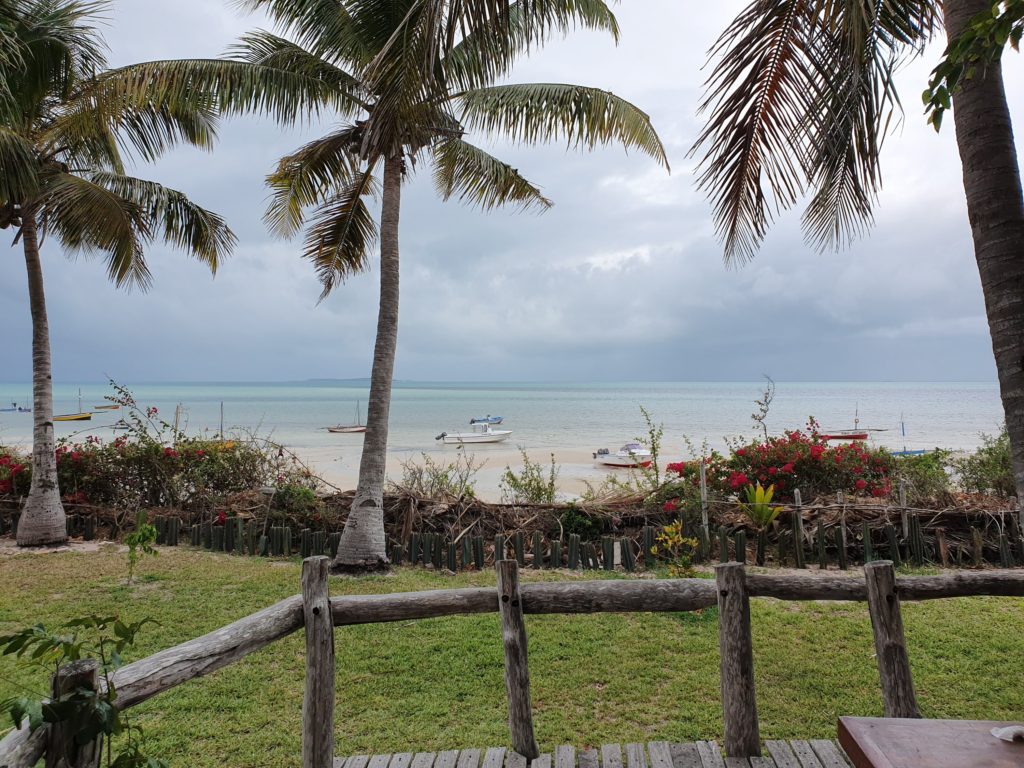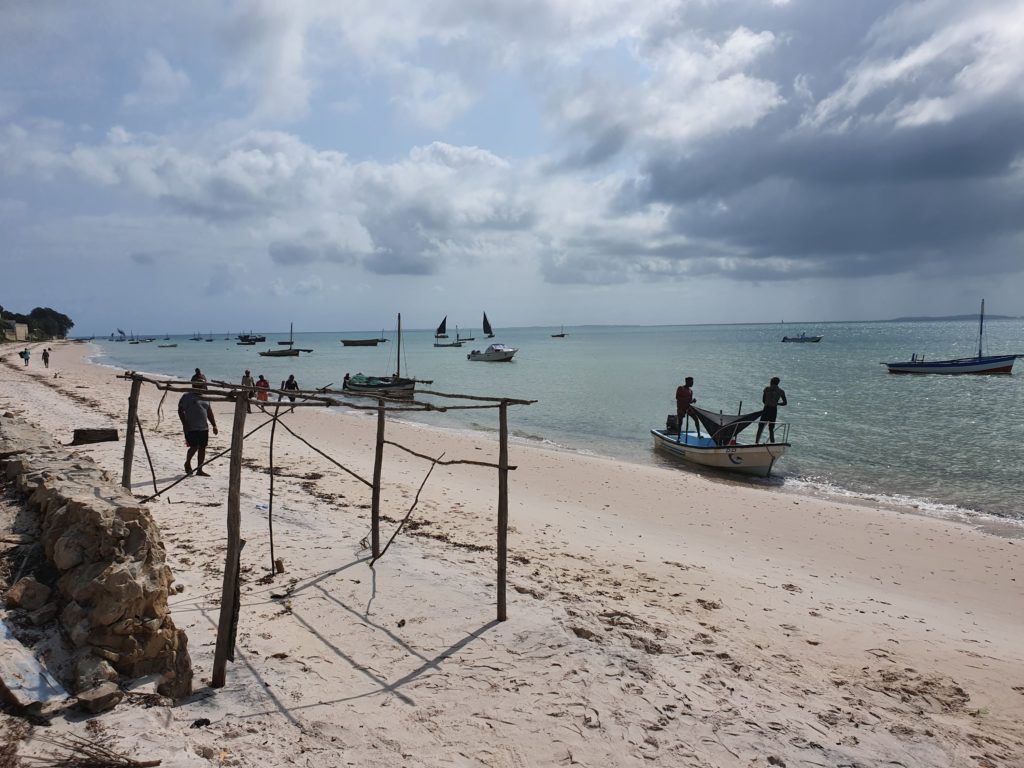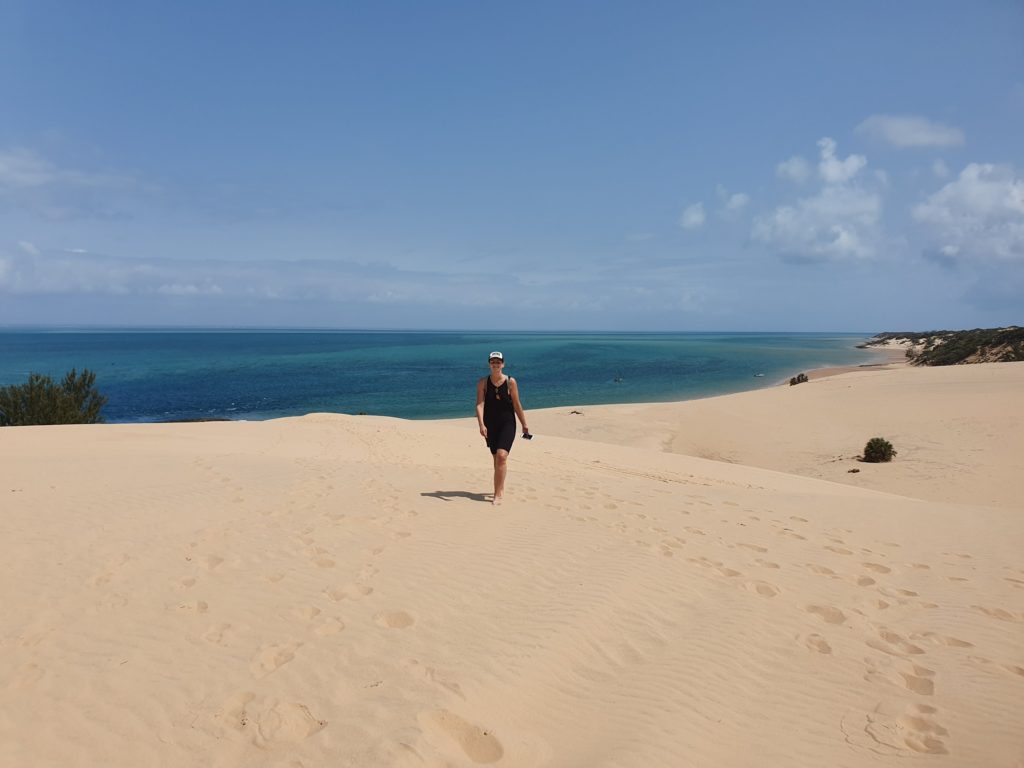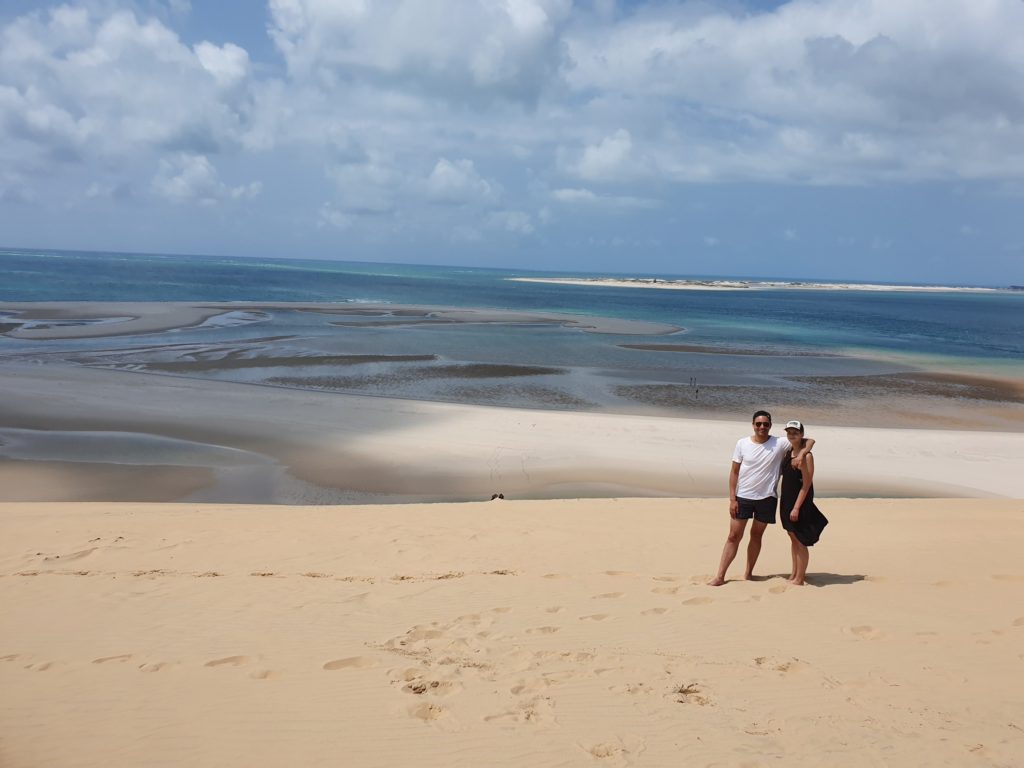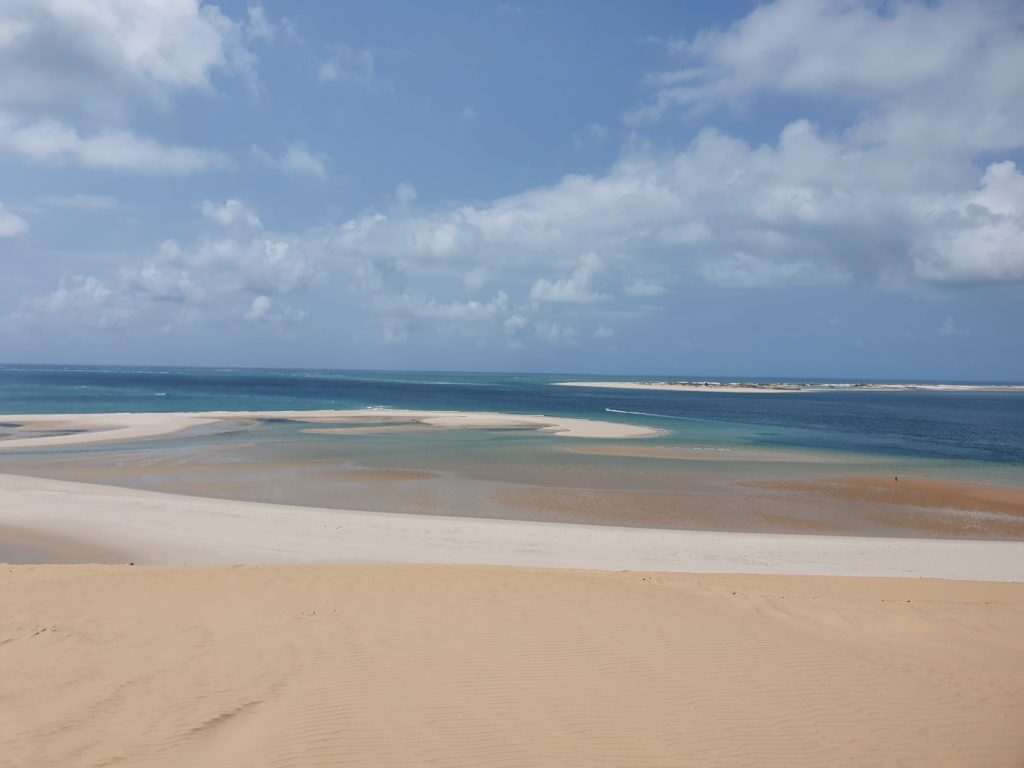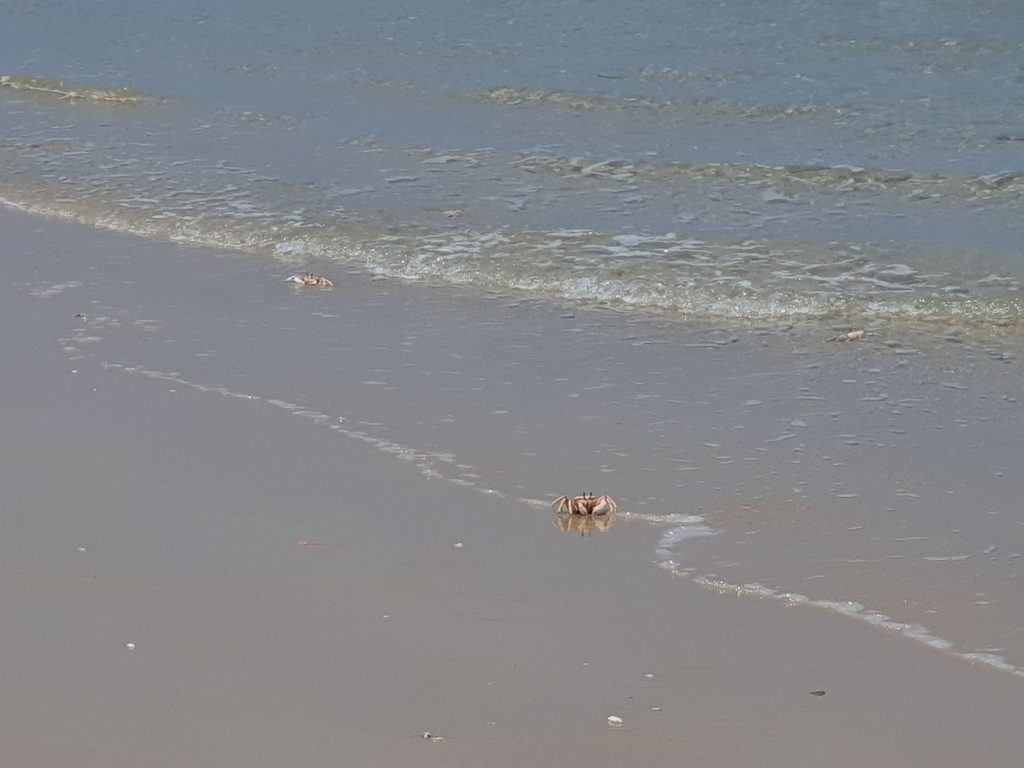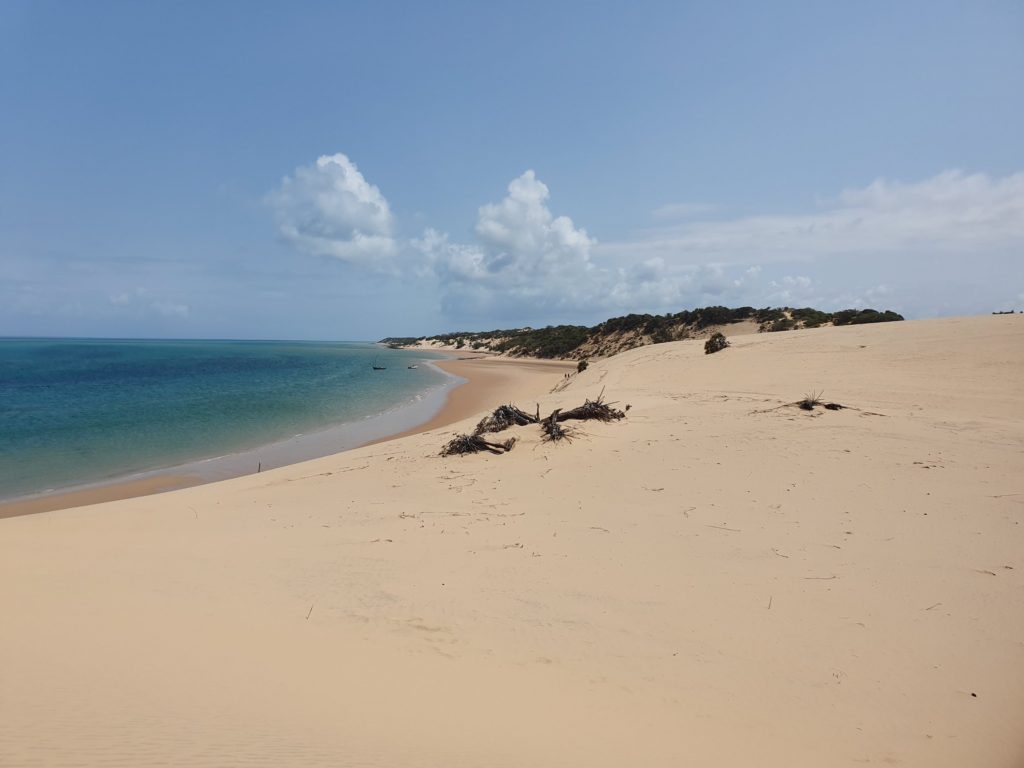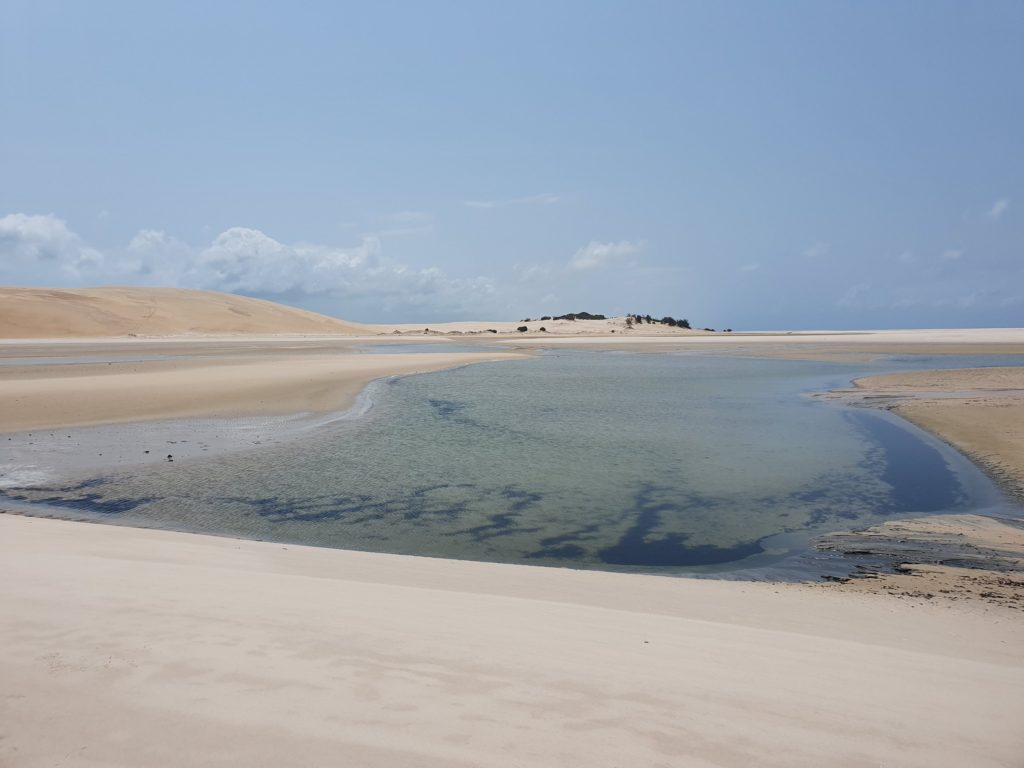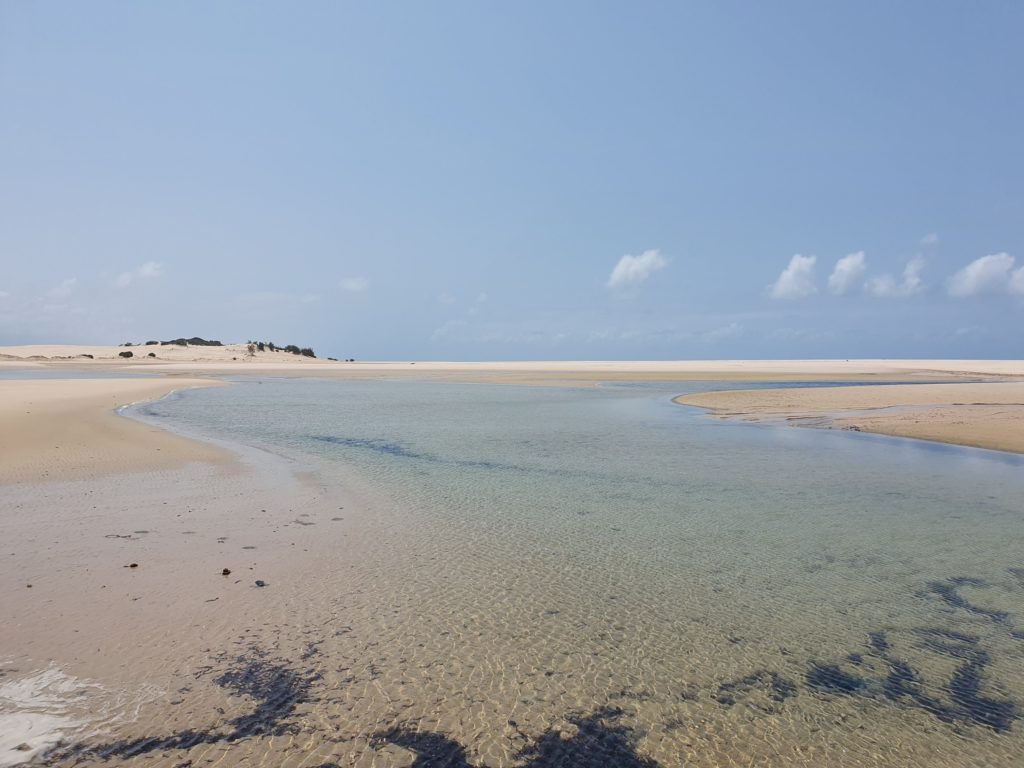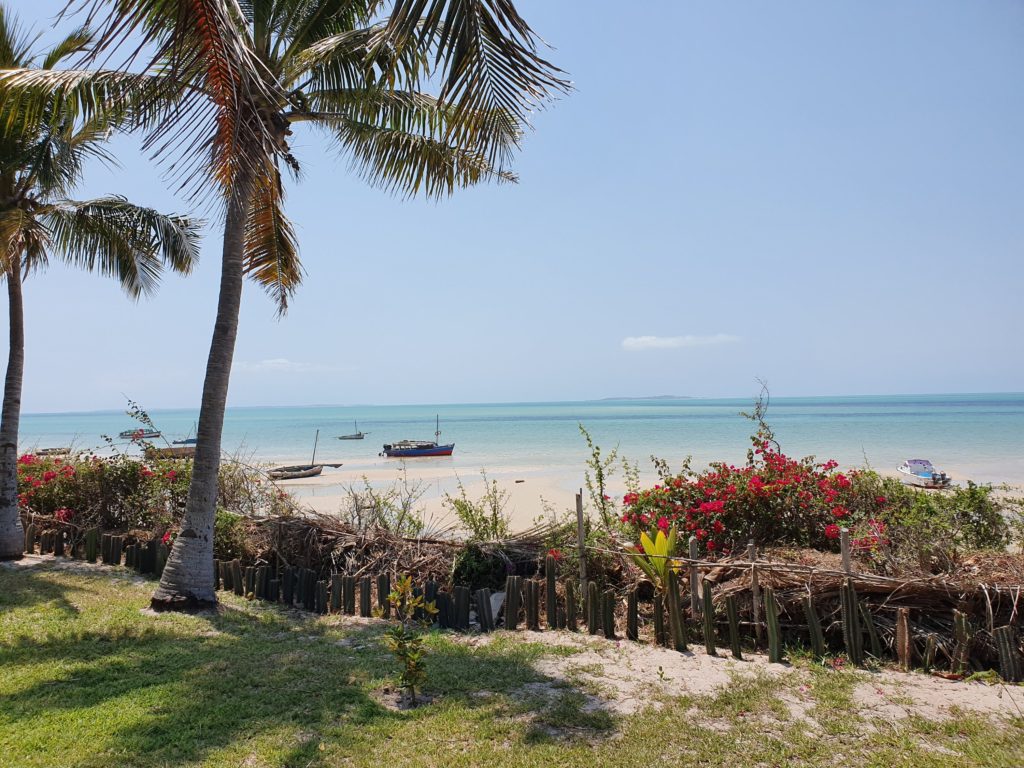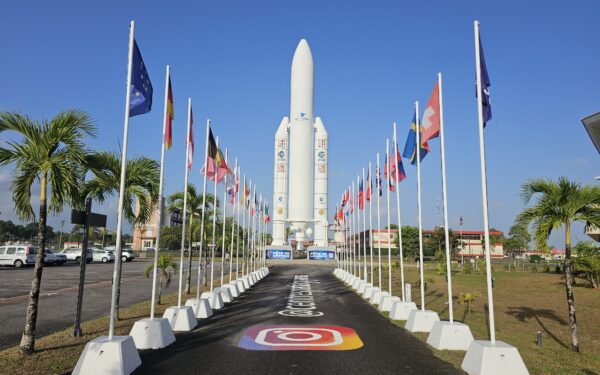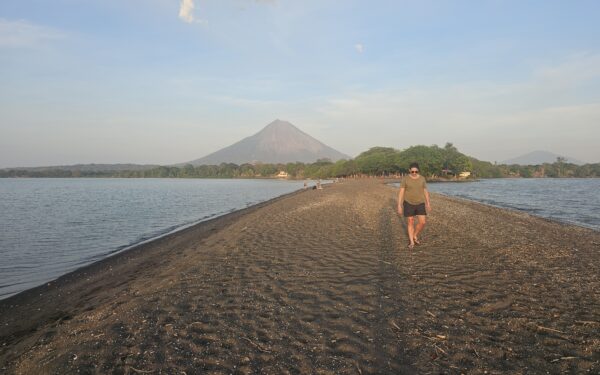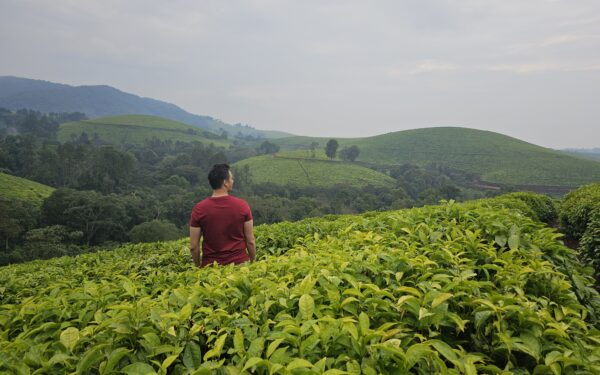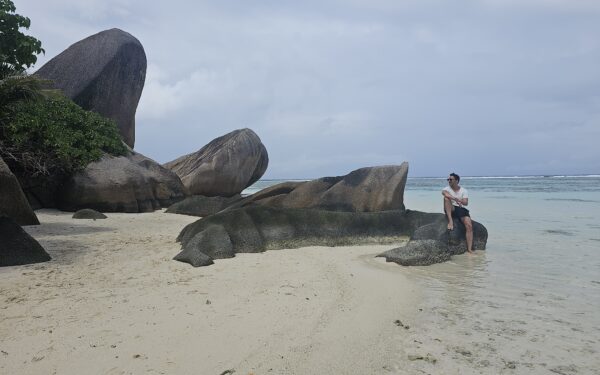Trip Report: Mozambique
Date of visit: September 2019
On our three-week journey through Southern and East Africa, Mozambique was the second country we visited. After spending two beautiful days in Eswatini, Mozambique became a bit more challenging, though.
In the Eswatini travelogue I wrote about how beautiful it is for me to cross a border on foot. Unfortunately, the border crossing was way more annoying in Mozambique than in Eswatini…
The weird ride to Mozambique
To avoid a long and uncomfortable ride by using public transport, Kati and I booked a private driver for the five-hour drive from Eswatini to Maputo, Mozambique’s capital. And this trip was really something.
The driver arrived 45 minutes late. He apologized and said that he had to organize a permit. Apparently, you need that if you drive from Eswatini to Mozambique. He also had a friend with him. A co-pilot. And I never like having a driver AND a co-pilot. “I don’t trust these people in Mozambique,” was his explanation for bringing his friend.
That was not the best start, but we were still glad that we had a private driver. Nevertheless, things started to get weird soon. After we drove for about 20 minutes, we stopped at a place that looked like a car sales garage. One of the two drivers got out and disappeared somewhere between the many cars standing there. “Does one of them want to buy a car now?” Kati asked. “I have no clue,” I replied.
The guy was back in the car five minutes later and we continued. We did not get far, though. Because we soon parked near a supermarket and the two drivers left the car and disappeared into a shop about 20 meters away. We easily waited 30 minutes on the parking lot and I used the time to get some drinks and snacks in the supermarket, while Kati got a coffee. The two guys finally came back with a document in their hands and we drove on.
All the more was I surprised when we stopped at the same car sales garage as before. The driver explained to us that he had to get a stamp for the permit there. So we waited another five minutes until everyone was back in the car. But the story with the permit doesn’t end here…
“The document has a spelling mistake, we have to go back again,” said the driver. “Back where? To Ezulwini (from where we started)?!?” I asked shocked. “No, just to the copy shop.” And so we were back again on the parking lot of the supermarket after five minutes. Fortunately, everything was good now. So when we arrived at the “car garage” for the third time, we finally had the stamp we needed to cross the border. In the meantime, more than 1.5 hours had already passed and we probably covered only 15-20km of the whole distance. T.i.A.
The roads to the border were actually in pretty good condition, only the many speed bumps were annoying. Sometimes I had the feeling that a new speed bump was coming every 100 meters, which made the ride uncomfortable. Besides, we didn’t get really warm with the two drivers. But they obviously with us or with one of us at least.
As we had a short break at another supermarket, I left the car to buy some more snacks. When I came back I saw how the driver was chatting with Kati. The conversation ended abruptly when he noticed me. Everyone got back into the car and we continued our journey. “Thank God you’re back,” Kati said. “The driver started a conversation with me and then suddenly asked me for my contact details.” WTF? I had the feeling that in the past two hours it became quite obvious that we were a couple. The driver tried anyway. T.i.A.
Welcome to Mozambique
Good news first: apart from us, there were no other people who needed a visa on arrival at the border. Nevertheless, it took about 45 minutes until we had the visa in our passports. God knows how long it would have taken if a dozen people had already been waiting.
For Mozambique, most travelers need a visa that can be issued at the border. When I did some research before the trip, I found out that in the past this has not always worked without problems. There are known cases where border guards asked for bribes or even refused to issue a visa on arrival.
We were first asked for some documents, e.g. the hotel confirmation and the return flight. The customs officer then called the number on the hotel confirmation. Not once but twice. He probably wanted to double-check if we were actually staying there. Afterwards, we were led one by one into a room where they took photos of us. This was also the office, in which we had to pay the $50 for the visa.
While this procedure was relatively uneventful for me, it was less pleasant for Kati. She wanted to pay the $50 with mixed banknotes, including some $1 bills. But the customs officer didn’t accept them because they were printed before 2006 (this can also happen in other countries).
When she put the $1 notes back in her luggage and gave him bigger notes, the customs officer asked if she had a “gift” for him. After all, yesterday was his birthday, he said. Kati played stupid and pretended not to understand his request. The customs officer then issued the visa. However, when he gave her back her passport, he was examining her from top to bottom in a suggestive way. Plus, he asked for a “present” again before she could leave the room.
As I have already written, this is apparently not uncommon in Mozambique. Although such situations occur again and again in Africa, Mozambique is probably the only country in Southern Africa where something like this can happen. Mozambique is unfortunately highly corrupt and we got a good example of it immediately upon arrival.
Paranoia in Maputo
The green, hilly landscapes of Eswatini disappeared after the border and changed into yellowish, barren savannah. Maputo was not far anymore. Strangely enough, together with the scenery the music style in the car changed from African pop to R. Kelly and Céline Dion. This music ran non-stop during the last hour of our ride. We finally arrived in Maputo at 2 PM after leaving Eswatini at 8.45 AM.
I have to admit that Maputo was the only place I was a little afraid of on this trip. The main reason was the police. Maputo’s police are notorious for hunting tourists and taking money from them. I’m not talking about the usual “I’m thirsty and would like a coke” thing that can happen in many African countries. In Maputo, tourists have been threatened with firearms or physical violence in the past if they did not pay the police a bribe.
Although the situation is obviously not as bad as it was a few years ago, I still wanted to spend as little time as possible in Maputo. Especially now that I was traveling with my girlfriend. The stupid thing is that Maputo is almost impossible to avoid on a Mozambique trip. For most travelers it is the first and last stop in the country. At least, we could organize our trip so that we didn’t have to leave via the capital again.
Fortunately, we didn’t have much planned for Maputo. I just wanted to see two things: one of the cathedrals and the sunset from a café. And it seemed that this was absolutely doable during that afternoon. Our hostel gave us a map of the city where the no go-areas were marked. Unfortunately, it seemed as if there were many of them in Maputo and they were also not far away from our hostel.
The walk of about ten minutes to the cathedral already gave us a good impression of Maputo. The capital of Mozambique combines the beautiful and the ugly like only a few cities in the world. On one side you have a beautiful view to the sea, on the other side it is, well, an African city with all its typical peculiarities. This means a lot of rubbish on the ground, houses in need of renovation and a sometimes very weird architecture.
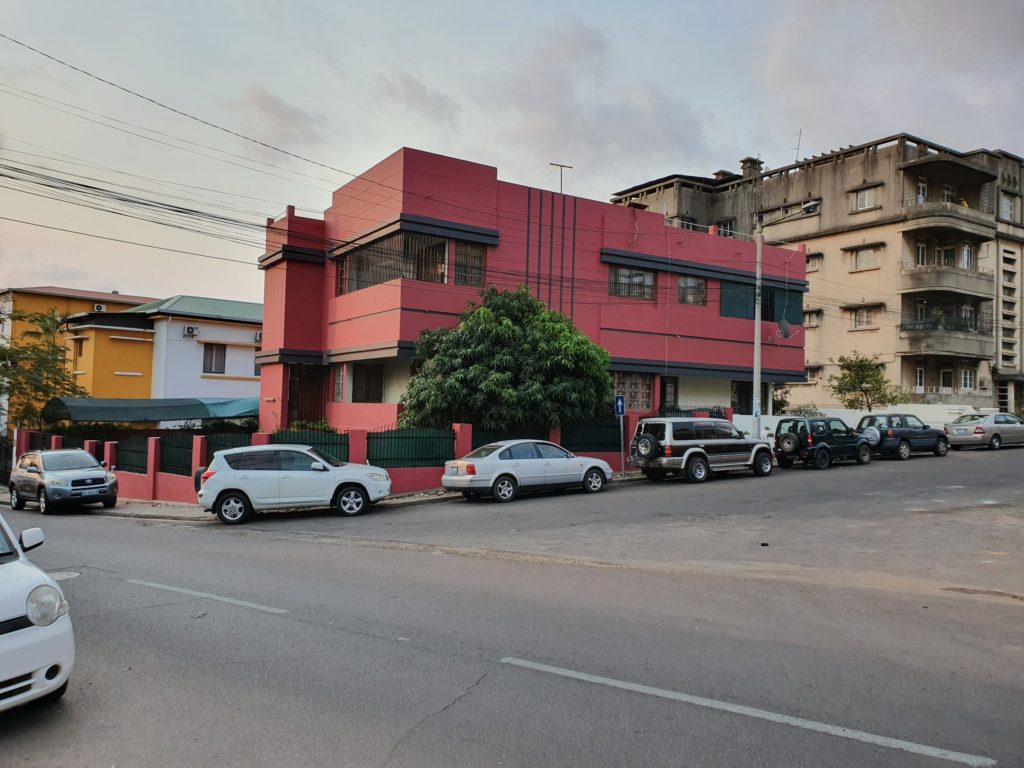
However, the architecture is also what makes Maputo special. Next to beautiful art deco-buildings there are unbelievably ugly houses that remind of the former Soviet Union. The ugliest house I saw was just a few minutes walk from our hostel. I bet that we would have found more if we had more time in town.
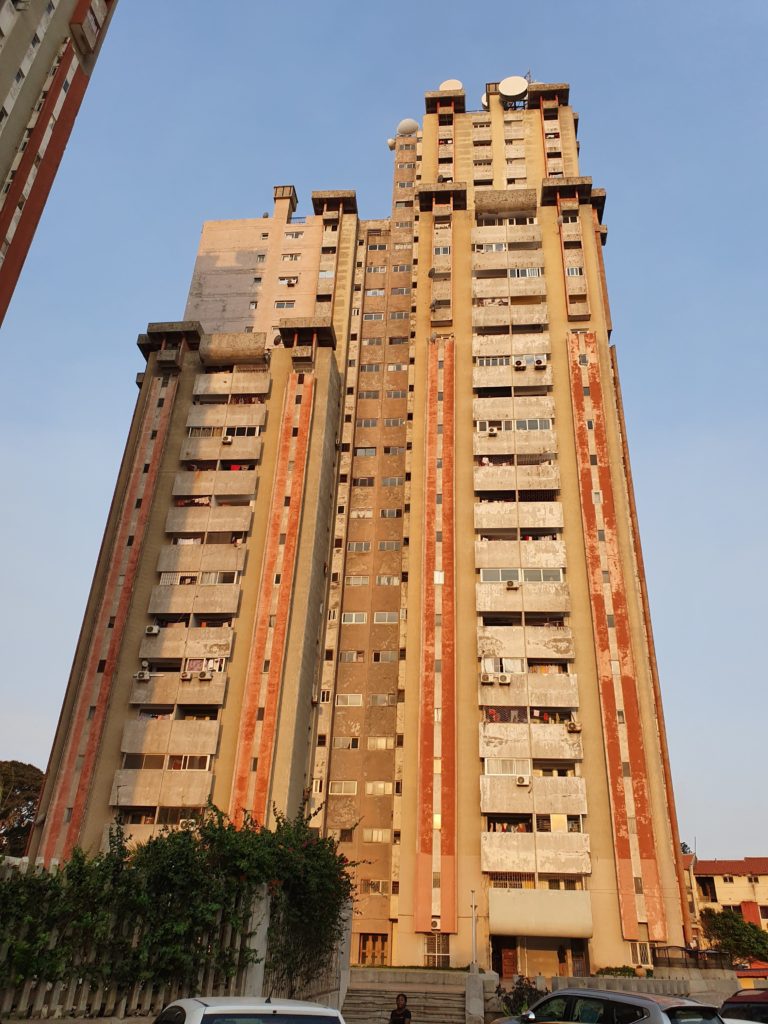
The houses fascinated me anyway and I could have observed and photographed the buildings for hours. Because of its architecture and geographical features, Maputo even looked to me like Miami meets the Soviet Union and Africa. It’s definitely a unique city in the world and I haven’t seen anything like this before.
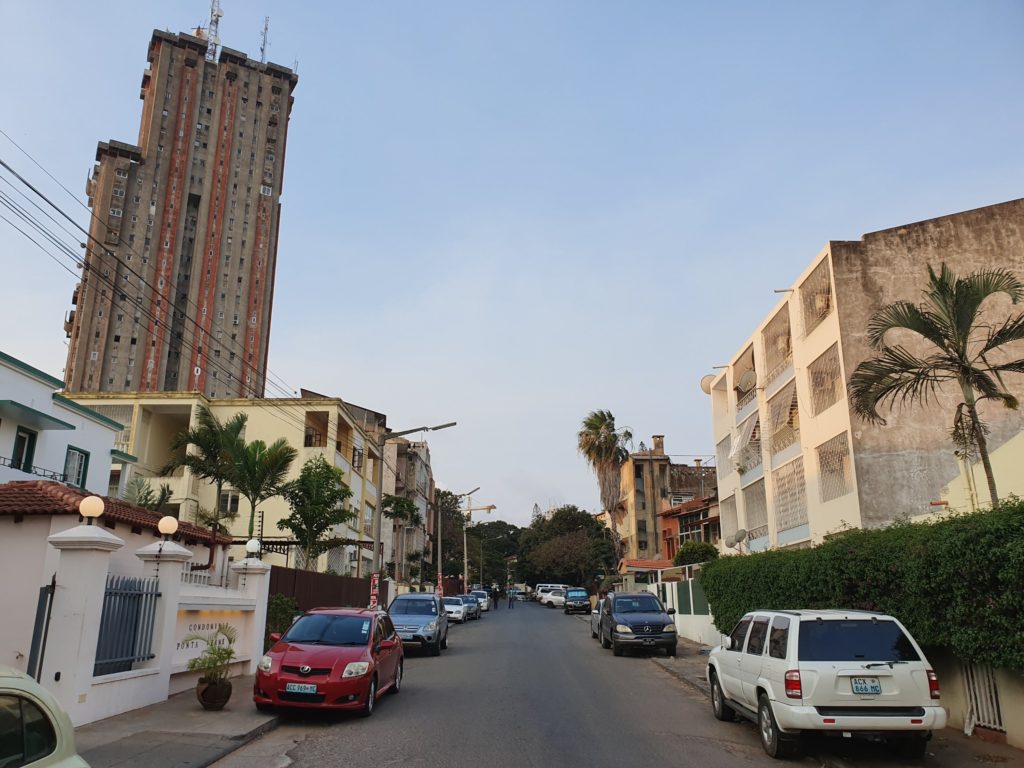
The biggest influence that you notice in Maputo is still the Portuguese. Mozambique is one of six Portuguese-speaking countries in Africa (the others are Angola, Cabo Verde, Equatorial Guinea, Guinea-Bissau and São Tomé and Príncipe). For me, it was the my 17th country in Africa and the first one where neither English nor French was an official language.
It took about ten minutes until we arrived in front of the cathedral. To be honest, it wasn’t really a relaxed walk. The locals stared at us with a rather grim look and there was no sign of the warmth I had felt in many other African countries.
The cathedral is right next to the Praça da Independência (Independence Square), in the middle of which stands the statue of Mozambique’s first president Samora Machel. The whole square looked pretty interesting and I wanted to take a picture of it. Two things reminded me that I had to do this with extreme caution.
First, I read in a blog that the author was stopped by the police in front of this statue when he was taking some pictures of it. Then he had to get into the police car and the police told him that photographing the statue was forbidden (which is absolute bullshit) and that he had to give each of them 500 dollars, otherwise they would beat him up. Fortunately, the guy could run away without paying the bribe in the end.
Second, the receptionist at our hostel told us not to take a picture of the statue when the police are in sight. But I really wanted this photo, so Kati and I walked around the roundabout that was running through the square and took some pictures quickly.
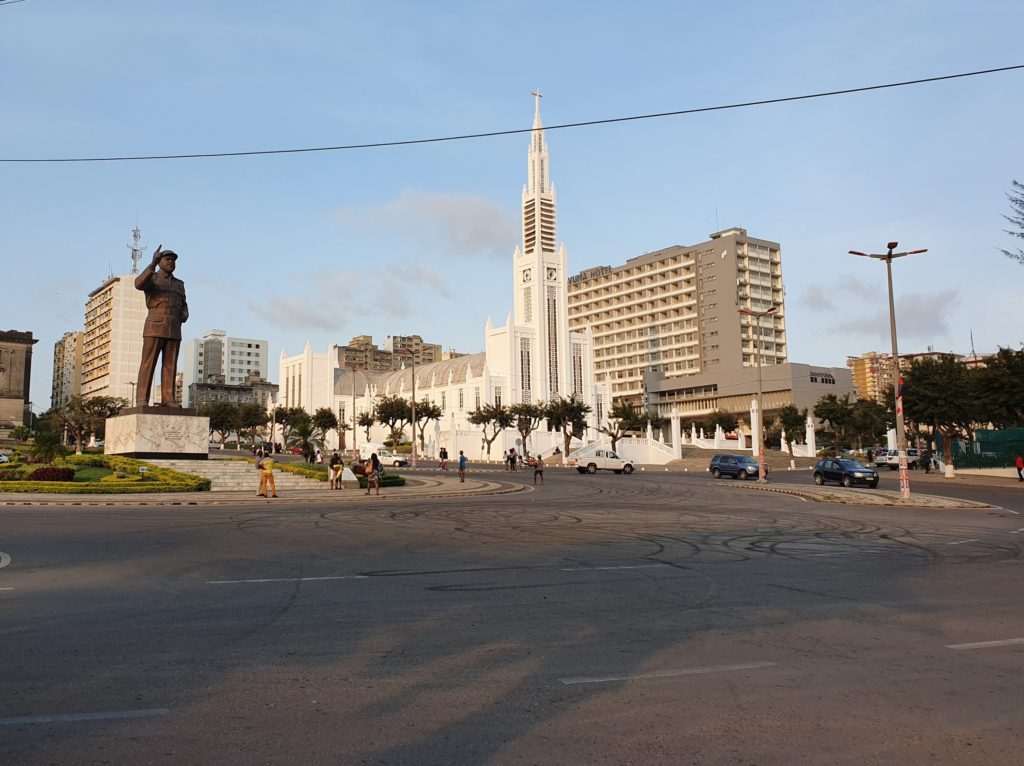
After we walked around the roundabout, we finally stood directly in front of the cathedral. The size and the bizarre shape impressed me. Although I had actually planned to take a few photos quickly and then leave the area again, I also wanted to have one with me on it. So I positioned myself in front of the cathedral and Kati took the photos.
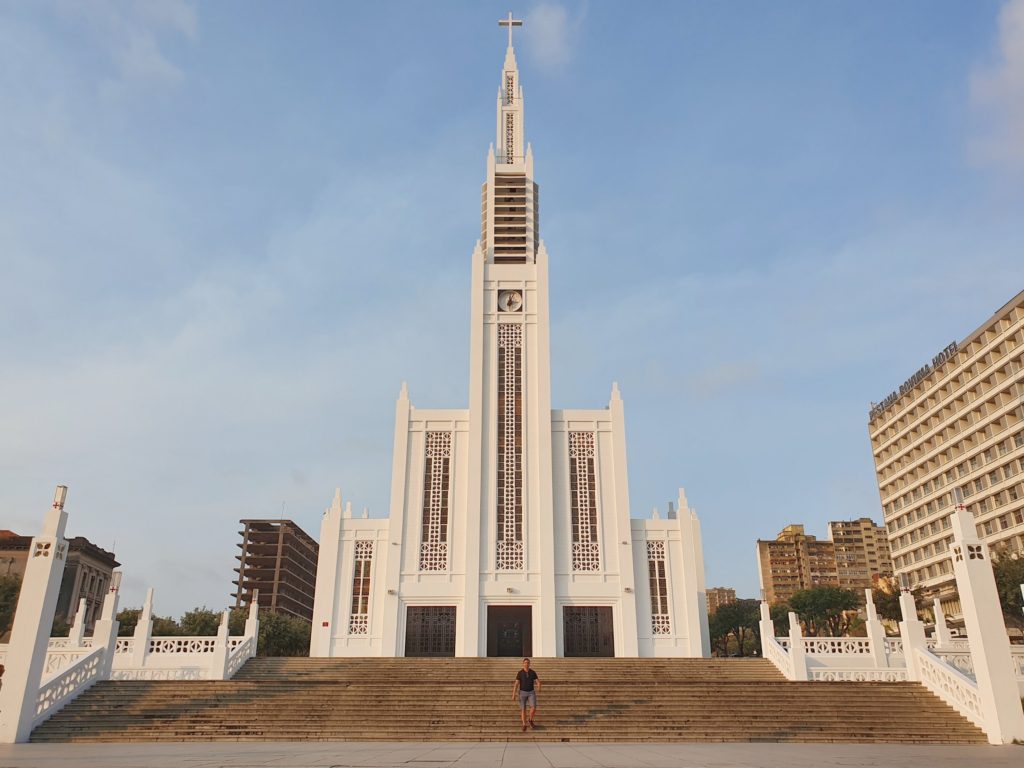
“Police!!!”
Kati jerked together completely frightened when I shouted these words. I was already standing next to her again and saw a police car driving through the roundabout. We were lucky that the cops did not choose the exit to the street where we were standing. It was the only scary moment in Maputo. Still, we didn’t really feel comfortable in Mozambique’s capital even afterwards. There were no problems, but we knew that we had to avoid every man in a uniform and that walking around after sunset would be risky.
That’s actually quite a pity, as it is one of the most interesting cities for photography in which I have been so far. The (partly super-ugly) architecture is fascinating and the city or what we saw of it offers some very exciting photo spots.
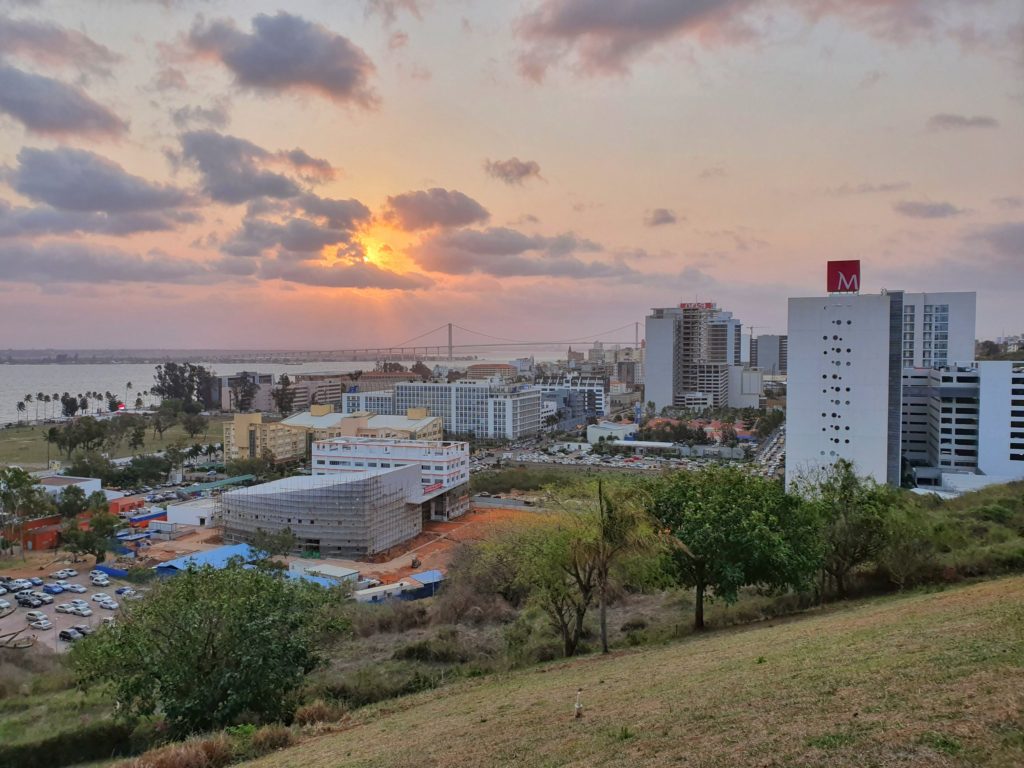
For example, the sunset that we watched from the Hotel Cardoso. From the hotel, you first see the ugly architecture of the city, but behind it the sea and the Maputo-Katembe bridge, the longest suspension bridge of Africa.
We finished the day at the Piri Piri restaurant. No matter what you read about Maputo, this restaurant is recommended again and again as a place that you have to visit as a tourist. For less than ten dollars we ordered a whole chicken with peri peri sauce, one of the most famous dishes in Mozambique.
In this moment I found it almost a bit sad that we left Maputo already the next morning. Maputo is a city for gourmets. Mozambique has the reputation of having one of the best cuisines on the African continent and I would have liked to try more of it. Plus, it is possible to find pastéis de nata ni Maputo, one of my favorite sweets in the world.
But otherwise we were both happy that we could move on. All in all, Maputo was uncomfortable. And as a little anecdote to finish the Maputo chapter, I can tell you about the bed bug we found in bed that evening. Fortunately, it was only one and our only encounter with these beasts on the whole trip (and my first experience ever in my life with a bed bug after about 800 nights in hotels).
Wasted days in Vilanculos
From all the possible destinations in Mozambique we chose Vilanculos for the next three days. The reason for this was the Bazaruto Archipelago, which many call the highlight of the country. It is also the first search result if you google “best thing to do in Mozambique”. 🙂
A small propeller plane with the most uncomfortable seats I have ever experienced flew us to our destination. The plane landed briefly in Inhambane first, where more than half of the passengers got off to Tofo, another popular beach destination in the country.
If we had made this trip by bus, we would have been on the road for about 10 hours. Mozambique is quite a large country, the 36th largest in the world. Traveling overland through the country takes a lot of time because of the bad roads. It is also said that overland journeys in Mozambique are anything but comfortable. There are often about twice or three times as many people as seats in the vehicle.
Therefore, we could not complain when we landed in Vilanculos after two hours and reached our accommodation after another 10-minute drive. We had booked a beachfront bungalow in a backpacker camp. And this camp was pretty nice. The ocean was about fifteen meters away from our bungalow and the whole site looked very charming.
Unfortunately, the weather really sucked when we arrived. The first two days were dominated by heavy wind and rain. And it was chilly. So it was a very bad combination to enjoy a beach holiday. These two days were wasted days and there is not really anything to report about. We basically just hoped that the day would pass quickly.
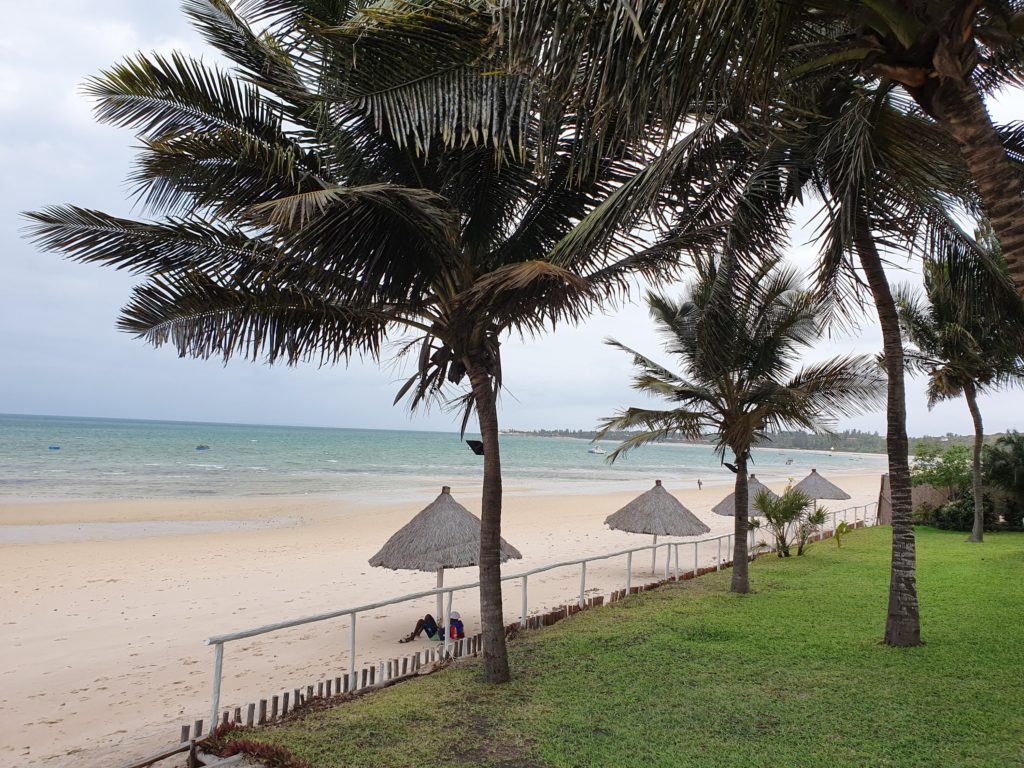
There is not much to do in Vilanculos anyway. We visited the town once in order to buy a few things, but the town is basically just a few streets and some small shops. There are no bad weather activities in Vilanculos, so we just sat in our camp without doing anything specific.
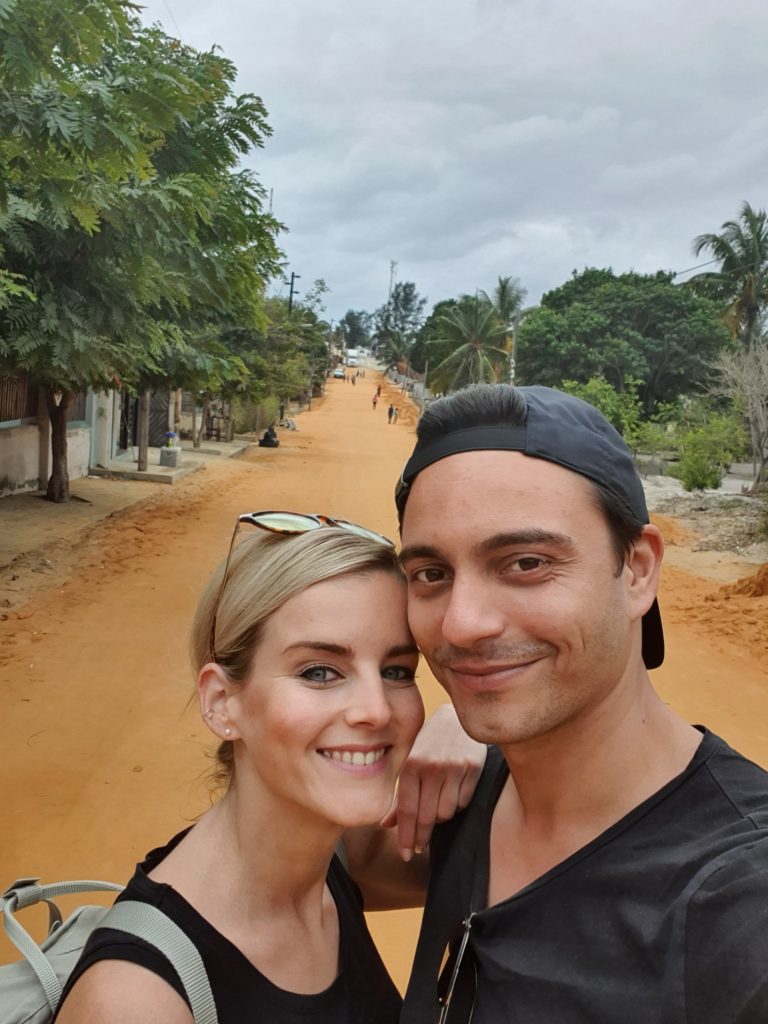
By the way, you cannot compare such a backpacker camp with those in Peru or Thailand for example. In Vilanculos, everybody seemed to be for himself and at 22.00 o’clock the light was out in the whole camp. They even turned off the wifi then. But that seemed to be okay for most of the guests. Those who visit Vilanculos probably just want to relax.
To be honest, I started getting a bit nervous. We only had one day left. If the weather did not change, we couldn’t even visit the Bazaruto Archipelago…
Mozambique’s highlight
Fortunately, the sun finally appeared on the last day. It would have been a premiere in my 92nd country otherwise. Never before have I been in a country, neither in Europe nor anywhere else in the world, where the weather was bad every day. And I am happy that this series also continued in Mozambique.
As I mentioned before, we came to Vilanculos because of the Bazaruto Archipelago. It wouldn’t have made sense to do that on the two rainy days before. But now the sky was blue and we were ready to go. Together with Daoud, a traveler from Dubai, we went by boat to the archipelago in the morning. The national park consists of six islands, two of which we would see on this day.
To call the boat trip uncomfortable would be a huge understatement. This was mainly due to our boat driver, who had a lot of fun racing over the waves at full speed. It was a painful affair for us. Although the driver saw us spiking up and down on the boat, he showed himself little affected and continued the trip this way. Needless to say, he didn’t get any tip after the tour.
Bazaruto Island was the first island we reached and it was absolutely stunning. It is an island that consists mostly of huge sand dunes. The island immediately reminded Kati and me of the Dune du Pilat that we visited in Bordeaux in May. In comparison to the Dune du Pilat, however, there weren’t many people on Bazaruto Island. So we practically had the island to ourselves.
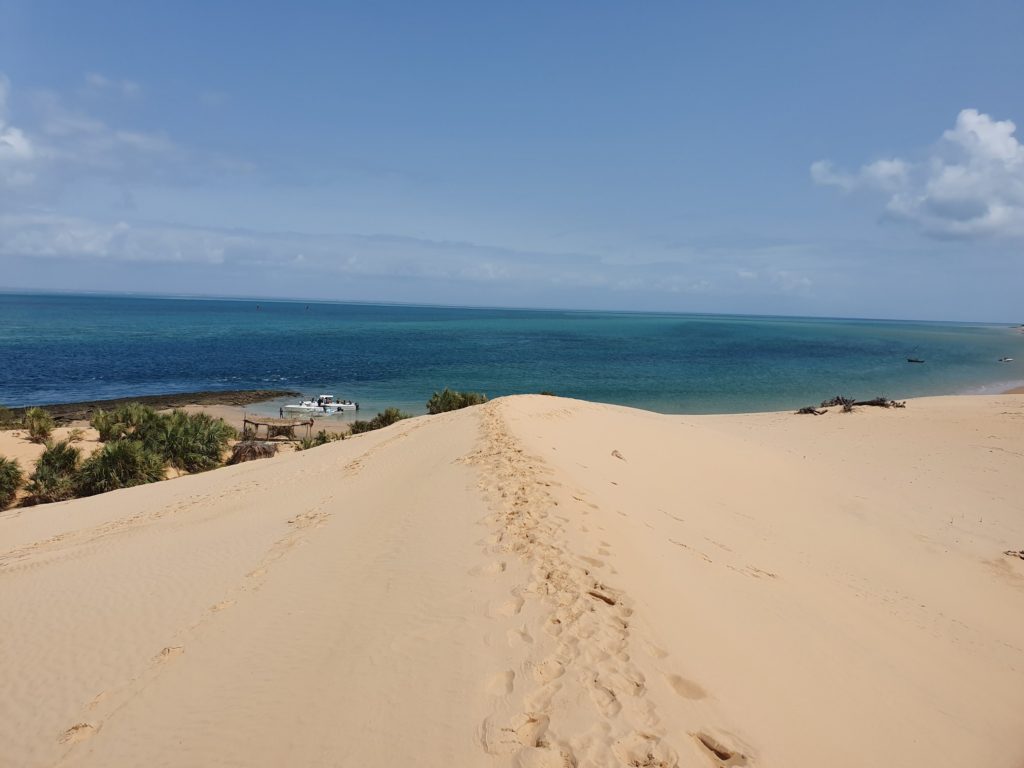
Unfortunately, our time was somewhat limited on this island, because after 20 minutes our tour guide was already waiting for us in the boat again. However, we came back to the island after a one hour snorkeling tour in a magnificent underwater world. We then had more time to explore other places of the island.
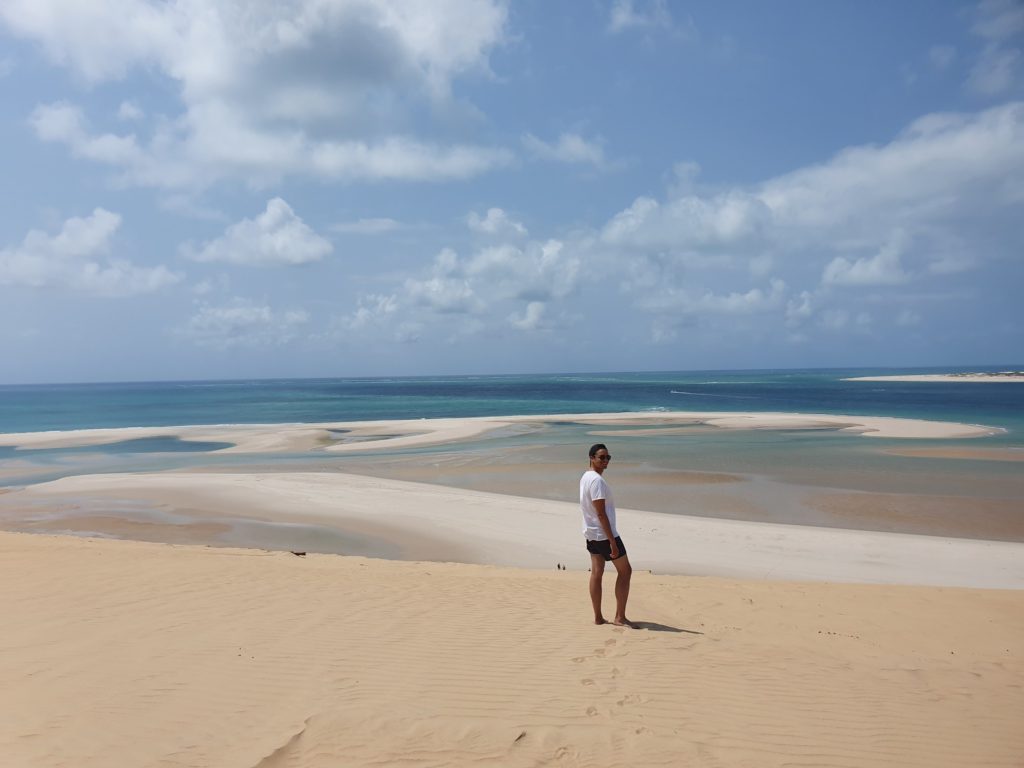
After lunch, we drove to the second island Benguerra, which in my opinion was not as spectacular as Bazaruto Island, but also very beautiful. The highlight for me were the many crabs that crawled around the coast and were washed away again and again by the sea. There were hundreds, if not thousands, of them.
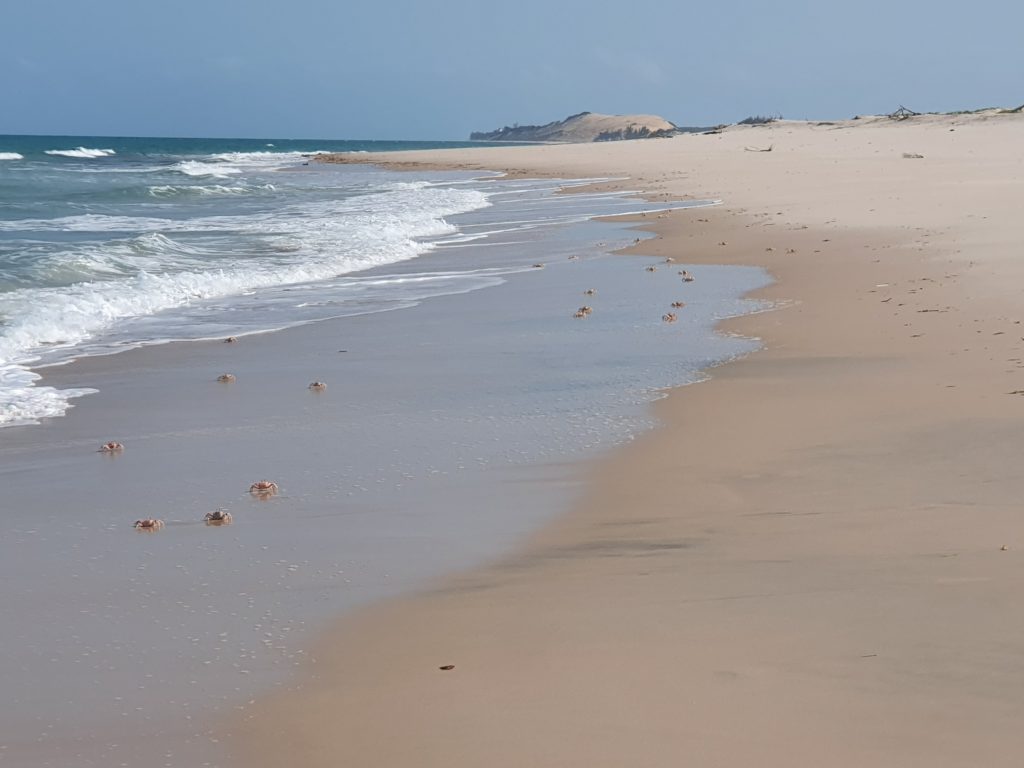
The second highlight was the manatee, also known as sea cow, which we tracked down and followed in the boat for a few minutes. The manatee didn’t seem to be impressed by our presence and just continued to swim around. It was amazing. I have never seen such an animal before and found these wonderful creatures incredible. Some of the travelers we met only came to Vilanculos because of these animals.
In the late afternoon we arrived back in Vilanculos. This day was great and a very good mixture of fascinating nature and an animal world that I have never seen before.
Obviously, the Bazaruto Tour was definitely the best thing we experienced in Mozambique. Moreover, it is probably also the most beautiful place you can visit in the whole country. After three days with rather bad weather we had a good finale in Mozambique at least.
Is Mozambique worth a trip?
We left Mozambique towards Malawi the day after. In total we spent four days in the country. Four days may seem short for a country as big as Mozambique, but to be honest I didn’t really feel the need to stay longer. Of course, we could have added Ilha de Moçambique, Tofo or another beach destination to our itinerary. However, I have the feeling that it would have been a repetitive trip because we would have just seen one beach after the other.
In addition, there is relatively little to do at these beach destinations. Thus, those who do not like to spend several days on the same beach will probably be disappointed. Daoud, who was with us on the Bazaruto tour, went after Vilancuolos to Inhaca Island, an island near Maputo. He said that Vilanculos was Las Vegas compared to Inhaca because there was really nothing on Inhaca Island.
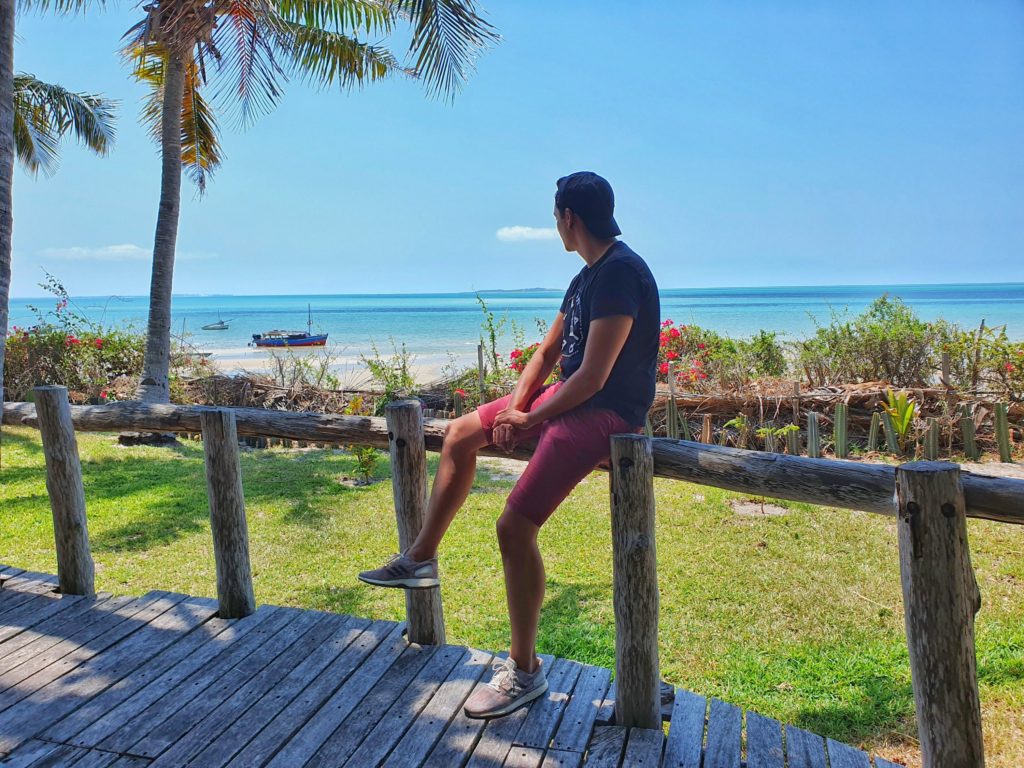
Is Mozambique worth a trip? In my opinion not really. The country is not particularly easy to travel due to the huge distances and offers too little variety for my taste. Mozambique’s beaches are nice, but you don’t have to travel to Mozambique only for that. You can find similar or better beaches in other African countries.
In addition, corruption in Mozambique is as endemic as in West Africa. We were lucky that we only had problems crossing the border and didn’t have to pay anything in the end. But in Maputo we were always so nervous because of all the stories about the police that we had the corruption there at least constantly in our memories.
A few days after we left Mozambique we received a message from Daoud. The police took his passport from him at the airport and said they would only return it if he gave them a “gift”. Daoud refused to pay and received his passport back in the end. It seems that no Mozambique trip is complete without being harassed by the police or border officers.
To summarize, I would say that Mozambique is only for travelers who have seen a lot in the world and would like to “experience something different” like a destination with nice beaches and few tourists. They just have to make sure that they do not get bored on the beach. Plus, they also need to have a certain travel experience in order to be able to deal with the corruption in Moz.
